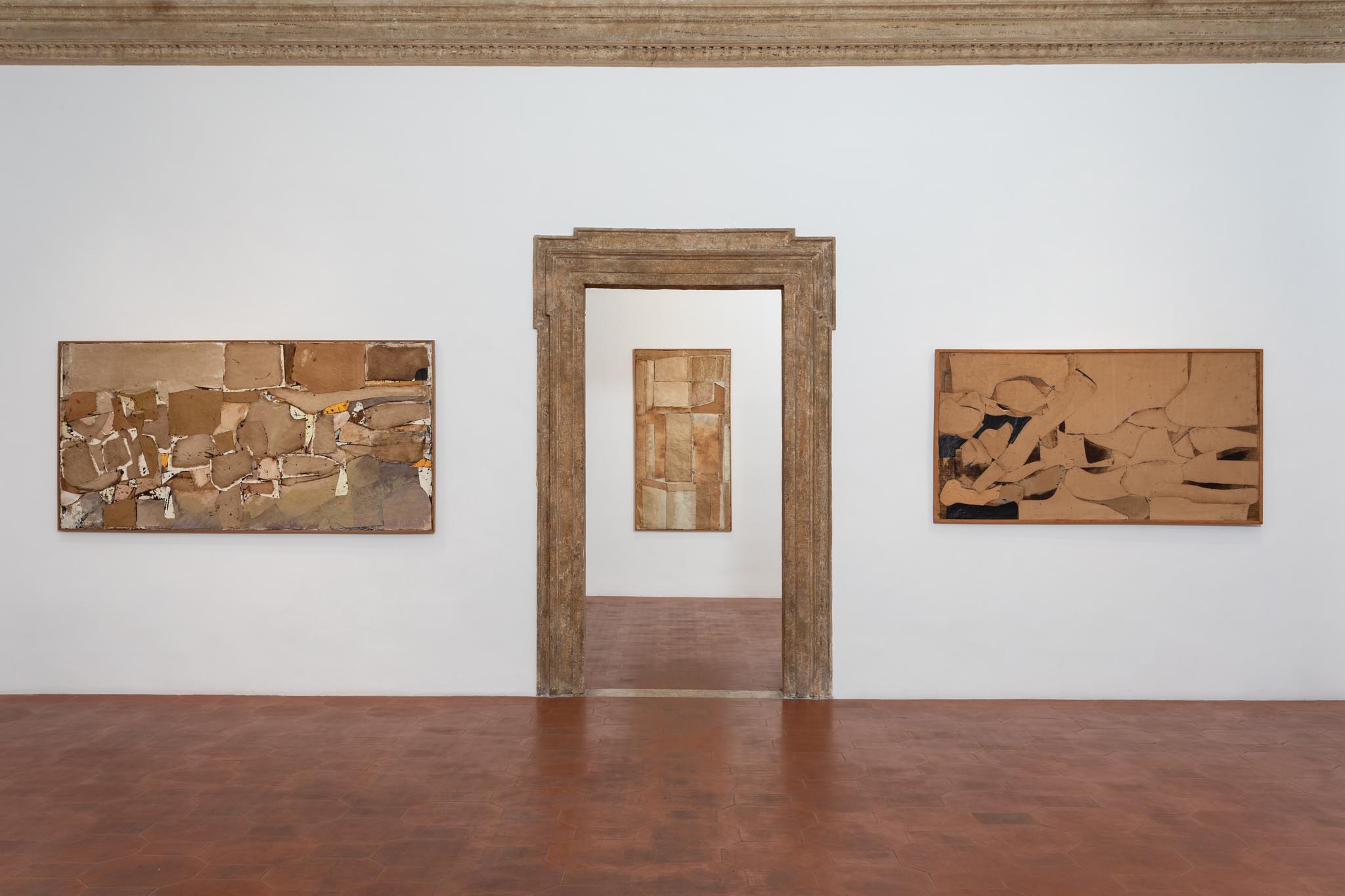Born in Boston to Italian parents, Corrado Marcarelli (Boston, 1913 – Parma, 200) — known from 1950 as Conrad Marca-Relli — moved with his family to New York City in 1927. Marca-Relli attended a private art school and took evening painting classes, developing a strong interest in Italian Renaissance art. In 1930, he studied under Faust Azzaretti at the Cooper Union Institute. From 1935 to 1938, he worked for the Federal Art Project of the Works Progress Administration, where he met artists who would significantly influence his vision of painting, including Willem de Kooning, Franz Kline, and John Graham.
From 1941 to 1945, Marca-Relli served in the U.S. Army and took part in his first exhibition, Soldier Artists (1941), with a work titled Reveille. After his military service, he relocated to Woodstock, NY, where he produced paintings influenced by Surrealism and the metaphysical art of De Chirico, Carrà, and Sironi. An extended trip to Paris and Rome in 1947–1948 deepened his connection to European art traditions.
Marca-Relli’s early works reflect a thematic focus on the urban landscape, still life, circus scenes, and architectural elements, characterized by atmospheric and layered compositions. These pieces draw on the metaphysical vision of De Chirico and are informed by avant-garde movements such as Picasso’s Cubism and the Surrealist tendencies of European émigrés.
Upon returning to New York, Marca-Relli co-founded the Eighth Street Club alongside Philip Pavia, Mark Rothko, Franz Kline, Willem de Kooning, and others. The club became a key gathering place for American intellectuals and artists, and it played a central role in organizing the seminal Ninth Street Show in 1951—an exhibition that helped define Abstract Expressionism and was supported by Leo Castelli.
This exhibition solidified Marca-Relli’s place among the New York School artists, and his name appeared prominently in the group’s Painting and Sculpture Annuals from 1953 to 1957. In 1953, he participated in the second edition of the Ninth Street Show, held at the Stable Gallery, where he first exhibited his collages. Following this pivotal moment, several major museums—including MoMA, the Solomon R. Guggenheim Museum, and the Whitney Museum—acquired his large-scale works. That same year, Marca-Relli moved to East Hampton, Long Island, where he formed a close friendship with Jackson Pollock.
Throughout the 1950s and 1960s, Marca-Relli’s reputation grew steadily. He was awarded the Logan Medal by the Art Institute of Chicago in 1954; took part in the 28th Venice Biennale in 1955 and Documenta II in Kassel in 1959; exhibited with Robert Motherwell in Düsseldorf in 1961; and in 1962, participated in the major traveling exhibition Abstrakte Amerikanische Malerei in Darmstadt. In 1967, the Whitney Museum of American Art installed his first retrospective.
In 1956, he created The Death of Jackson Pollock, a tribute to his late friend’s tragic death in a car accident. That same year, the Metropolitan Museum acquired The Battle, a work inspired by Paolo Uccello’s The Battle of San Romano (c. 1438).
In 1957, Marca-Relli returned to Rome, where he formed connections with Italian artists such as Ettore Colla, Gastone Novelli, Achille Perilli, Giuseppe Capogrossi, and Toti Scialoja. He also held several academic positions: teaching at Yale University (1954–55 and 1959–60), lecturing at the University of California, Berkeley (1958), and later at New College in Sarasota (1966).
During the 1970s and 1980s, Marca-Relli divided his time between Italy, New York, and various European capitals. He also spent periods living aboard a boat on the Seine and in the Balearic Islands. In 1997, he moved permanently to Parma, following a long-standing collaboration with Galleria d’Arte Niccoli that had begun in 1989. The following year, he was honored with a solo exhibition at the Peggy Guggenheim Collection in Venice, titled Tribute to Marca-Relli.
In 2000, he passed away in Parma after being granted honorary citizenship. That same year, the Mathildenhöhe Institute in Darmstadt hosted a major retrospective in his honor.
In 2008, another important retrospective was organized at the Rotonda della Besana in Milan. Between 2009 and 2011, two major exhibitions were held at Knoedler & Company Gallery in New York: The New York Years 1945–1967 and City to Town. The Pollock-Krasner House and Study Center in East Hampton paid tribute with an exhibition titled The Springs Years 1953–1956. His most recent Italian retrospective was organized by Galleria Mattia De Luca: Conrad Marca-Relli: The Irascible Master (2021).
